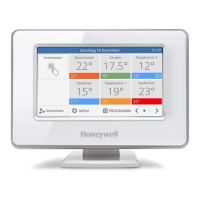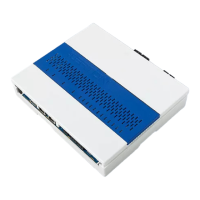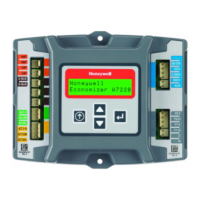ENGINEERING MANUAL OF AUTOMATION CONTROL
ELECTRONIC CONTROL FUNDAMENTALS
124
Another material used in RTD sensors is platinum. It is
linear in response and stable over time. In some applications
a short length of wire is used to provide a nominal resistance
of 100 ohms. However, with a lo w resistance value, the
temper atur e indica tion can be ef fected b y element self hea ting
and sensor lead wire resistance . Additionall y, due to the small
amount of resistance change of the element, additional
amplification m ust be used to incr ease the signal le vel.
To use the desir able char acter istics of pla tinum and minimiz e
any offset, one man ufactur ing technique de posits a film of
platinum in a lad der pa tter n on an insula ting base . A laser
tr imming method (F ig. 4) then b ur ns away a por tion of the metal
to calibr ate the sensor , pr oviding a r esistance of 1000 ohms a t
74F. This pla tinum film sensor pr ovides a high r esistance-to-
temper atur e relationship. With its high r esistance , the sensor is
relatively immune to self-hea ting and sensor lead wire resistance
offsets. In ad dition, the sensor is an e xtr emely low-mass de vice
and r esponds quic kly to chang es in temper atur e. RTD elements
of this type ar e common. Ear ly thin f ilm pla tinum R TDs dr ifted
due to their high surf ace-to-volume r atio which made them
sensitive to contamina tion. Impr oved packaging and f ilm
isolation ha ve elimina ted these pr oblems r esulting in incr eased
use of pla tinum R TDs over wir e wound and NTC ther mistor s.
LADDER NETWORK OF
METALLIC FILM RESISTOR
LASER TRIM (INDICATEDBY
GAPS IN LADDER NETWORK)
CONNECTION PADS
C3098
Fig. 4. Platinum Element RTD Sensor.
Solid-State Resistance Temperature Devices
Figur e 5 shows examples of solid-sta te r esistance temper atur e
sensor s having negative and positi ve temper atur e coefficients.
Thermistor s are negative temper atur e coefficient sensor s
typicall y enclosed in very small cases (similar to a glass diode
or small tr ansistor) and pr ovide quick response. As the
temperature increases, the resistance of a thermistor decreases
(Fig. 6). Selection of a thermistor sensor must consider the
highly nonlinear temperature/resistance characteristic.
POSITIVE RTD
THERMISTORS
C3077
Fig. 6. Resistance vs Temperature Relationship
for Solid-State Sensors.
Positive temper atur e coefficient solid-sta te temper atur e
sensors may have relatively high r esistance values a t room
temper atur e. As the temper atur e incr eases, the r esistance of the
sensor incr eases (Fig. 6). Some solid-sta te sensor s have near
perfect linear c har acter istics over their usa ble temper atur e rang e.
TEMPERATURE (DEGREES)
o
F
30
40 50 60 70
80
90
100
110
0
10
20
30
40
RESISTANCE (OHMS)
20K OHM AT
77
o
F (25
o
C)
80K
70K
60K
50K
40K
30K
20K
10K
o
C
TEMPERATURE (°F)
POSITIVE RTD RESISTANCE ( )
050100 200150
M15034
POSITIVE RTD
20K OHM NTC THERMISTOR
Fig. 5. Solid-State Temperature Sensors.

